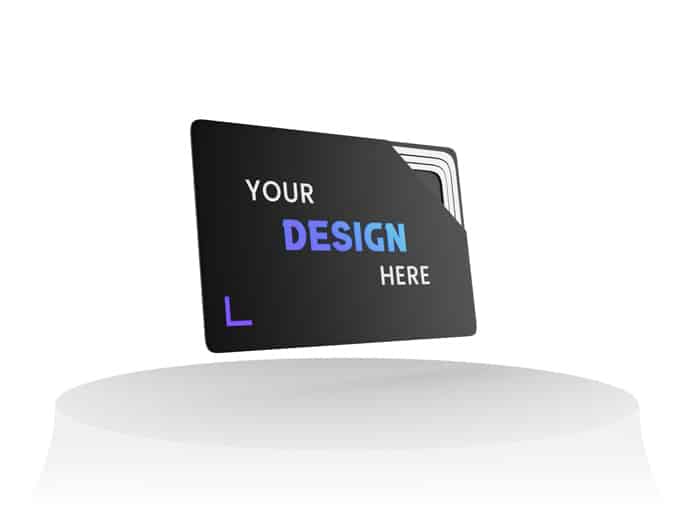
RFID and NFC: everything you need to know about these two increasingly popular technologies!

In this article, we’ll take a look at these two technologies and outline the advantages and disadvantages of each.
Since we’re talking about data being transmitted between two contactless devices, we need to understand what’s really going on.
Understanding the basics of RFID and NFC systems
First of all, RFID stands for Radio Frequency Identification.
This means that we’ll be able to link up different systems using radio wave technology.
In general, RFID-enabled devices are capable of both transmitting and receiving radio-frequency signals.
For the system to work at a minimum, RFID equipment needs to be fitted with a specific reader capable of interpreting radio waves, a “tag” that will transmit the signal to the receiving object, and an antenna to send and receive data remotely.
There are two types of tag: passive and active.
Passive tags have a range of around 25 m, and are powered by electromagnetism from the reader.
Active tags are equipped with a special power supply that extends their range to around 100 m.
NFC (Near Field Communication) technology transmits data using short-range, high-frequency waves.
As with RFID, NFC-equipped equipment includes a reader, antenna and active or passive tags.
However, the data transmission distance is much shorter, at around 20 cm: this enhances security, particularly when using your smartphone to pay by simple contact with a retailer, or when this technology is used to unlock a protection system.
What are the main differences between RFID and NFC?
As you may have gathered, both technologies enable data to be exchanged between two devices.
In fact, specialists consider NFC to be an integral part of the RFID family: the main difference, apart from the nature of the waves, is the distance at which information can be transmitted.
NFC tags will be used on objects as common as a smartphone, a bank card or a digital business card, whereas RFID tags are more likely to be found in the logistics sector (warehouses, storage areas, store reserves, etc.) or in industry.
To give a concrete example, the badges that automatically pay tolls without having to take out a credit card are equipped with an RFID chip.
All it takes is a slight slowdown for the signal to be sent and understood by the receiver.
As far as NFC technology is concerned, you’ll find it implemented on your smartphone, for example: it acts when you bring your cell phone close to a pay station to make a payment.
Disadvantages of RFID chips
For the sake of clarity, we’ll separate passive RFID technology from active RFID technology.
The disadvantage of the “passive” RFID system is that, since there’s no power supply, the chips can’t store large amounts of data, otherwise they’ll degrade.
What’s more, the reader receiving the data must be able to send a relatively powerful signal, precisely in order to supply the passive tag with enough power to activate it correctly.
Finally, the distance at which data can be transmitted is relatively short, ranging from 60 cm to a maximum of 5 meters: this limits the fields of application.
For active RFID technology, while the range is much longer (100 meters), it’s important to remember that tags have an average lifespan of 3 to 5 years, due to the power supply: when the battery is empty, the tag must be replaced.
As a result, the active RFID tag is quite imposing: this has nothing to do with the slimness of a passive RFID chip that can be integrated into a payment card, for example.
Finally, the price of an active tag is much higher than that of passive RFID technology: specialists reckon that a passive tag costs a maximum of €0.10, whereas an active tag can cost up to €20 each.
Advantages of RFID chips
In the case of “active” RFID technology, the range is considerable, reaching over 100 meters, compared with the few centimeters offered by NFC technology.
Similarly, the reader doesn’t need to be very powerful, since active tags use an antenna that is powered by electricity.
In the case of passive tags, the fact that there’s no built-in battery isn’t necessarily a disadvantage, since it allows them to be discreet and very thin: they draw the energy they need to operate from the reader.
Passive RFID technology is also very inexpensive, which can be interesting if a company has a lot of systems to equip.
The lifespan of a passive “tag” can also be long, especially if you choose a manufacturing material that will stand the test of time: as there is no built-in battery, the problem of energy loss does not arise.
Disadvantages of NFC technology
NFC technology works very well. However, it’s important to remember that there are currently a number of different developments, and that unfortunately, some manufacturers deviate to a greater or lesser extent from existing standards: this could lead to technical incompatibilities between NFC-stamped equipment.
What’s more, since smartphones store a great deal of confidential data, such as bank accounts, social security data and other sensitive information, hackers are very interested.
And although NFC systems are highly secure, we can’t guarantee that they are absolutely tamper-proof.
Finally, to use data transmission via an NFC chip, you need a minimum amount of electrical power: this means that if your smartphone is completely discharged, you can’t use this technology.
It’s a small inconvenience… but one to be taken into account!
On the other hand, if you’re a user of digital business cards equipped with an NFC chip, you don’t need to worry about the energy issue, since it’s your interlocutor’s smartphone or tablet that will supply it!
Advantages of NFC technology
NFC is a highly advanced technology that enables contactless information to be transmitted easily and almost automatically.
There are three operating modes: peer-to-peer, which enables two devices to transfer data between each other; read-write, which enables a device to collect data from a system, even if it’s inactive; and card emulation, which is probably the best-known mode, and which you use to pay for purchases with your cell phone.
What’s more, NFC is a fairly open system: for example, you can use the Bluetooth network in parallel to share multimedia data.
The speed of transmission is also appreciable: for example, sending 1 gigabyte of data will only take around 10 minutes, so there’s nothing to stop you transmitting images, files, sound or video.
In the case of a digital business card, it’s precisely this technology that’s used to transmit your contact details and any other information you deem useful.
For private individuals, NFC technology is frequently used for two purposes: contactless payment, as mentioned above, and what is the equivalent of an automatic key to open your car.
Did you know, for example, that contactless payments made with an NFC chip are more secure than those made with a bank card?
It’s still very simple to use, since all you have to do is bring your NFC-equipped equipment close to the receiver, and the connection is made almost instantaneously and the operation is completed successfully.
Written by Camille BODET
The digital business card is a real ally for professionals wishing to promote their business effectively and instantly. In the...Lire la suite
VKARD is an innovative and effective solution to help all professionals stand out from the crowd and reinforce their brand...Lire la suite
If you prepare properly for a job interview, you'll have every chance of winning over the recruiter and getting the...Lire la suite
LinkedIn is a world-renowned business platform, and for good reason! Thanks to its many networking options, LinkedIn is the tool...Lire la suite
Find out how Leexi AI optimizes the management of videoconferences and business calls, saving time and improving efficiency.
In the professional sphere, it's vital to know how to convey certain strong values in order to stand out and...Lire la suite
Mastering the art of conversation is a real asset! By mastering the subtle art of conversation, you'll be able to...Lire la suite
Are you taking part in a trade event and want to do everything you can to make a good impression?...Lire la suite
CRM (Customer Relationship Management) represents a genuine corporate strategy for managing business contacts. This popular tool for professionals is in...Lire la suite
At a time when the professional world is in a perpetual state of competition, we might wonder what place altruism,...Lire la suite















